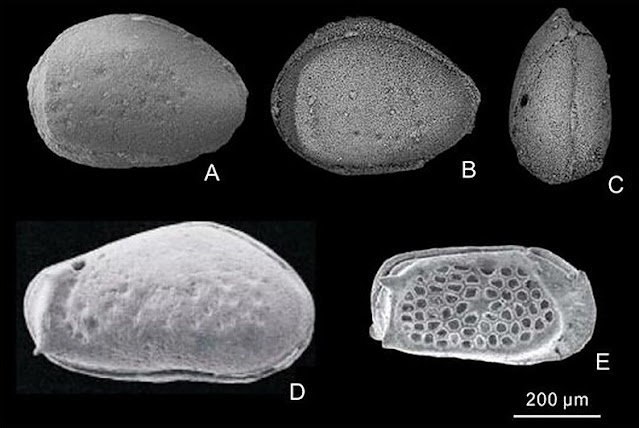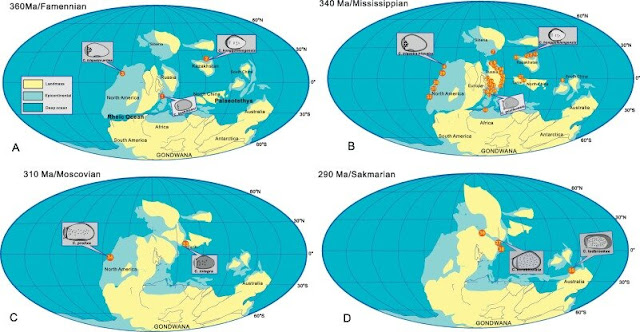Ostracods are microcrustacea that first appeared in the Ordovician and are still developing today. Although tiny, they are the most abundant fossil records of the Arthropod phylum, and the most diverse species of Crustaceans, with about 65,000 living and fossil species.
 |
| Distinct species of Cribroconcha Cooper, 1941 [Credit: NIGPAS] |
Ostracods offer special insights into the characteristics of Devonian bio-environmental events. The ostracode genus Cribroconcha Cooper, 1941, is characterized by distinct morphological features, rapid evolutionary rates and wide geographical distribution, making it a potential index fossil for stratigraphic correlation and palaeoecological changes.
Recently, Dr. SONG Junjun from the Nanjing Institute of Geology and Paleontology of the Chinese Academy of Sciences (NIGPAS) and her colleagues made a thorough analysis of the evolutionary pattern of Cribroconcha lineages and the established biozones.
To date, 37 species and two subspecies (36 species plus one species that with two subspecies) of the ostracode genus Cribroconcha Cooper, 1941, have been reported worldwide, ranging in age from the Middle Devonian to the Early Permian with an acme during the Carboniferous.
Based on the geographical distribution and morphological characteristics of Cribroconcha, two evolutionary lineages (i.e., Lineage 1 and Lineage 2) were identified, which originated in the European and the Kazakhstan plates, respectively. Lineage 1 can be subdivided into three types: 1-A (stable type), 1-B (reshaped type) and 1-C (spiny type).
 |
| Distribution of Cribroconcha species from the Late Devonian to the Early Permia [Credit: NIGPAS] |
The researchers found that 1-A stable type species inherited the characteristics of the early species totally. The 1-B reshaped type had elongate carapaces with subrectangular outline and subquadrate posterior border. Compared with the early species, species of this type only changed in the outline. The 1-C spiny type had the longest stratigraphic range and most species of this type had two sharp spines in the posterior border.
Most species of the 1-A and 1-B are benthic and living in a shallow marine environment. Some species of 1-C are nektonic and appeared in the deep cold waters from the shelf to the basin.
Only 1-C type species extended to the Early Permian, which implies the survival strategy of spiny type was successful. The morphological variability of spiny type is also related to the glacial event across the Devonian-Carboniferous boundary in the northern Gondwana, which generated cold deep water currents invading the palaeotethysian basins.
The research results were published in the journal Palaeogeography, Palaeoclimatology, Palaeoecology.
Author: Li Yuan | Source: Chinese Academy of Sciences [October 26, 2020]
No comments:
Post a Comment